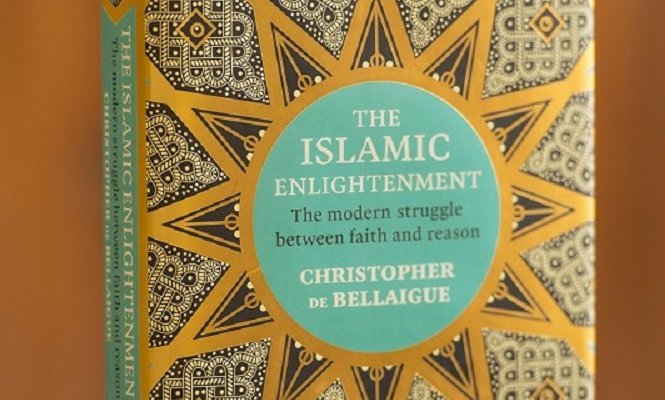‘Tears of Rangi: Experiments Across Worlds’ by Anne Salmond
by Dame Anne Salmond FBA
1 Oct 2018
Tears of Rangi by Dame Anne Salmond was shortlisted for our 2018 Nayef Al-Rodhan Prize, along with five other non-fiction works that promote global cultural understanding. Her most ambitious book to date, Tears of Rangi looks at New Zealand as a site of cosmo-diversity, a place where multiple worlds engage and collide. In this extract, the author explores how the terms Māori and pākehā came into usage.
Before the first Europeans arrived in New Zealand, there were no Māori ‘people’, just different kin networks based in different places. According to the East Coast tribal expert Mohi Turei, māori (a term that simply means ‘ordinary, usual, normal, everyday’) was used to describe people and phenomena in te ao mārama, the everyday world of light and life, in contrast with those in te pō, the dark, invisible ancestral world. In exchanges with the new arrivals (as recorded in Tupaia’s sketch of Joseph Banks and the Māori warrior, for instance), local people came to see themselves as māori (ordinary, normal) in contrast with pākehā, or Europeans – beings so strange that they might have arrived from the ancestral realm. Until that time, Māori had no need to distinguish themselves as a group from others, or their archipelago as a country in comparison with others.
Likewise, in these early encounters with Europeans, Māori began to refer to their own ancestral ways as te ao māori (the familiar, everyday world) in contrast with te ao pākehā (the world of the strangers). If one uses the term ‘world’ in English as the best translation for ao in Māori (as is often done; in the subtitle of this book, for instance), it can be misleading, however. In Māori, ao is a state of existence or a dimension of reality, usually translated as ‘world’, but without the implication of a bounded, self-contained, singular entity that underpins that term in English. Rather, the whakapapa networks that structure te ao māori, shaping its patterns, are intrinsically dynamic and open-ended. Strangers can be bound into these living webs by acts of generosity and alliance, often marked by gifts of taonga (ancestral treasures) including names, knowledge, artefacts, sexual partners or children, or severed from them by acts of aggression and humiliation – both of which require utu, equal (or greater) return over time.
Thus in Māori a hoa is a friend or companion; a hoa rangatira (chiefly friend) is a husband or wife; while a hoa riri (angry friend) is an enemy. The key term here is hoa, a relation of some kind. In Māori, it is the relation itself (not its quality; or the parties involved) that is ontologically prior. In this way of being, a person is constituted by their place in the relational networks, and in speaking Māori, the state and nature of one’s relationships are constantly being negotiated. In addressing other people, for instance, you must decide whether your relationship with them is close (in which case, the inclusive pronoun is used) or distant (when the exclusive pronoun applies), and whether it is dual or plural – for example, tāua (us two) or māua (me and someone else, excluding you); tātou (us, including you) or mātou (us, excluding you). Thus the pronouns māua and mātou encompass not only the speaker and the person or group they are including, but also the person or group they are excluding. Even the recipient of an insult as radical as kai tangata (being eaten) is still part of the relational matrix – in this case, a hoa riri (angry friend) whose mana has been destroyed.
At the same time, as Mauss pointed out in The Gift, notions of reciprocity and gift exchange are not unique to ‘exotic’ societies, but are also present in Europe. This allowed early European visitors to New Zealand to make some sense of their exchanges with Māori. As Captain Cook observed: ‘I have allways found them of a Brave, Noble, Open and benevolent disposition, but they are a people that will never put up with an insult if they have an oppertunity to resent it.’ While such ‘rough intelligibility’ allowed relationships to be forged, efforts at engagement between Māori and Europeans often backfired, thwarted by differing assumptions about how the world works. At the same time in these encounters – titiro atu, titiro mai – hidden premises sometimes come to light, making it possible for new ideas and practices to emerge as taken-for-granted forms of order are challenged. The element of surprise in such meetings was (and still is) at once disruptive, and creative.
© Anne Salmond from Tears of Rangi: Experiments Across Worlds, Auckland University Press, 2017.
Tears of Rangi was shortlisted for the 2018 Al-Rodhan Prize. Find out more about how to nominate for the Nayef Al-Rodhan Prize 2019.
Dame Anne Salmond FBA is Distinguished Professor of Māori Studies at the University of Auckland. Her previous books include Hui: A Study of Maori Ceremonial Gatherings; Two Worlds: First Meetings between Maori and Europeans 1642–1772 and The Trial of the Cannibal Dog: Captain Cook in the South Seas.



